Ingenuity Engine Fires Up Krakatoa in Mideast TV Spot
The hills themelves are shot plates. We went out to the desert and shot as much as we could and stitched together the plates. Then we built dummy geometry to match the hills and emitted particles off of that geometry for the blowing sand.
We hadn’t been working much with Krakatoa before. It is something we started experimenting with for the job. The particles themselves are controlled through ParticleFlow in 3dsmax and as far as Krakatoa is concerned you really just mess with the density based on how many particles are in the scene.
Something we found was that using millions of particles and then rendering them to be less dense gave it a more realistic sand look as opposed to having less particles and them being more dense. So it was a balance of altering the density and the number of particles.
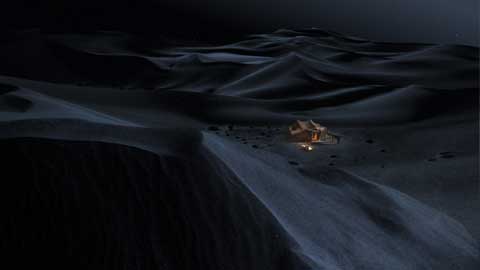
How did you approach the scenes where the buildings come together form sand?
We actually did that in reverse. We reversed the plate, motion-tracked the plate in reverse and emitted particles off of geometry that we built for the buildings – the Eiffel Tower and Brooklyn Bridge and such. So we had 3D models of that stuff, hid the geometry and then just emitted particles off of that geometry. So it started off as the shapes of the buildings and ran a deflector through the scene to make the particles come loose from the geometry of the buildings. Then when we flipped that and played it in reverse the particles all come together to form the structures. Then having that wispy, stringy sand-look was created by modifiying the turbulence in the wind force.
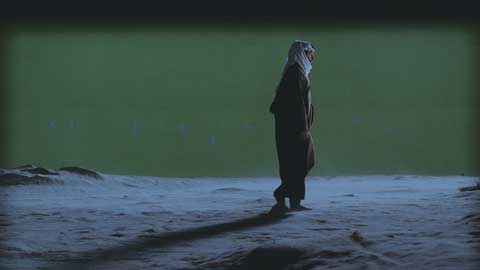
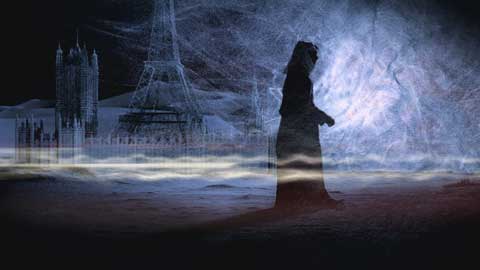
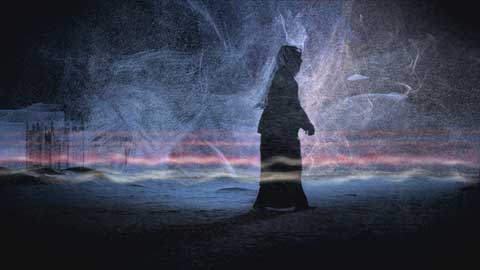
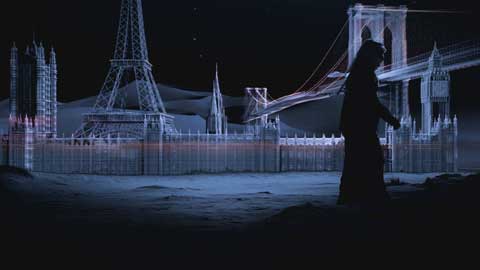
In the scene in the tent with the words swirling around and then disintegrating. The words have a papery look to them. Talk about the words coming off the page and how the look of that was created.
We had to do some experimenting with it. Originally they were just extruded out text and they did feel like they were blocky instead of looking like they were organically part of the scene. We treated the words as if they were on paper, then we animated he paper so it would have a slight wrinkle as it flew, and then attached that to a particle system that’s constrained to a path that travels throughout the scene. We already had the animation of the words fluttering and once we attached them to a particle system it gave it that paper-in-the-wind look. From there we were able to emit particles off of the actual words to make them disintegrate.
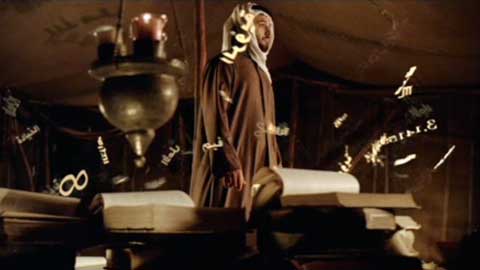
Talk about the shot where the land rises up out of the ocean?
They were done separately though both were done in 3ds max and rendered in V-Ray. On the shot where the land comes out and interacts with the water, we did that with RealFlow. We build the geometry of the island and it raising up in 3dsmax and brought that into RealFlow and then had to do a lot of experimenting to make the water interact properly with the island.
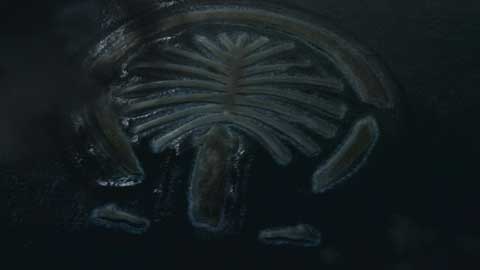
And the streaking light effects?
Those were also created with 3ds max and Krakatoa. We created a sphere, put a boatload of noise on it. The sphere had the density of the actual light streak. Then we animated that to go through a path in the scene and as that is animated it is emitting particles in its path. And then of course we hid the original geometry of the sphere. The noise on it is animated so there is a little bit of different densities in the light streak itself. Then after a period of time of it lingering – like four frames – it gets kicked into a wind force so it starts to dissipate very slowly so it doesn’t look like a solid streak.
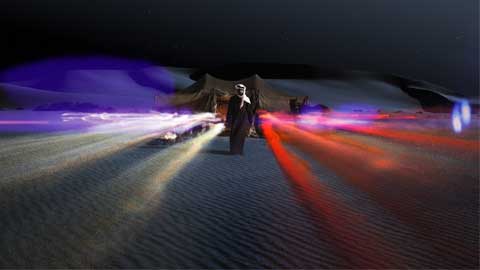
Did you enjoy this article? Sign up to receive the StudioDaily Fix eletter containing the latest stories, including news, videos, interviews, reviews and more.










Leave a Reply